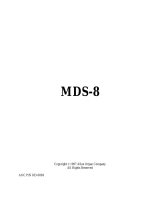Johannus Studio II is a versatile digital organ that combines traditional organ sounds with innovative features for a truly immersive musical experience. With its three memory groups, you can store and recall various combinations of stops and settings, allowing for quick and seamless transitions during performances or practice sessions. The built-in digital acoustic effect adds depth and ambiance to your playing, while the adjustable volume controls provide precise sound customization.
Johannus Studio II is a versatile digital organ that combines traditional organ sounds with innovative features for a truly immersive musical experience. With its three memory groups, you can store and recall various combinations of stops and settings, allowing for quick and seamless transitions during performances or practice sessions. The built-in digital acoustic effect adds depth and ambiance to your playing, while the adjustable volume controls provide precise sound customization.













-
 1
1
-
 2
2
-
 3
3
-
 4
4
-
 5
5
-
 6
6
-
 7
7
-
 8
8
-
 9
9
-
 10
10
-
 11
11
-
 12
12
-
 13
13
Johannus Studio II User manual
- Type
- User manual
Johannus Studio II is a versatile digital organ that combines traditional organ sounds with innovative features for a truly immersive musical experience. With its three memory groups, you can store and recall various combinations of stops and settings, allowing for quick and seamless transitions during performances or practice sessions. The built-in digital acoustic effect adds depth and ambiance to your playing, while the adjustable volume controls provide precise sound customization.
Ask a question and I''ll find the answer in the document
Finding information in a document is now easier with AI
Related papers
-
Johannus Opus 10 User manual
-
Johannus Rembrandt 397 AGO User manual
-
Johannus PRESTIGE 30 User manual
-
Johannus Ecclesia T-25 User manual
-
Johannus Vivaldi 270 User manual
-
Johannus Ecclesia D350 User manual
-
Johannus Studio 150 User manual
-
Johannus Opus 350 User manual
-
Johannus Studio 170 User manual
-
Johannus Opus 300 series User manual
Other documents
-
Rodgers A658 Owner's manual
-
Viscount Domus P33 Owner's manual
-
Viscount Domus P33 Owner's manual
-
Ahlborn PRAELUDIUM IV-E Owner's manual
-
 Allen Organ Company MDS-8 User manual
Allen Organ Company MDS-8 User manual
-
Rogers 585 Owner's manual
-
Viscount Prestige 60 Quick Manual
-
Viscount Sonus 40 Owner's manual
-
Viscount Chorum 50 DLX, Chorum S50 Owner's manual
-
Rodgers 595 Owner's manual













